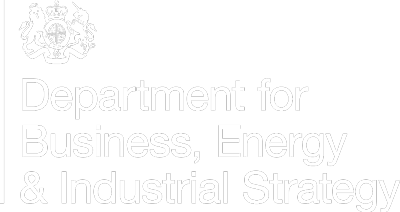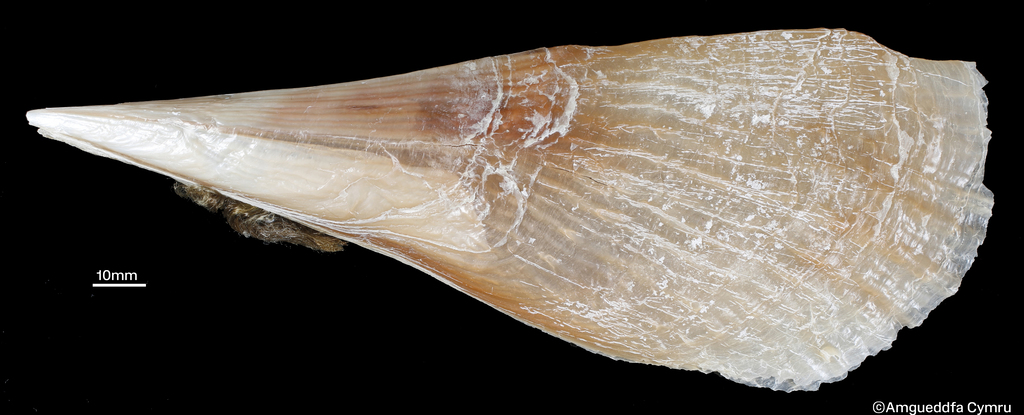Pinna carnea Gmelin, 1791
Pinnoidea : Pinnidae | Non-native |
| Tebble name: | |
| Smith & Heppell name: |
To size: To 395 mm. Shell Structure: Thin, brittle, fragile. Equivalve: Equivalve. Equilateral: Inequilateral, beaks at extreme anterior. Tumidity: Not tumid. Outline: Elongated narrow, fan-shaped.
Sculpture: Radial ridges, sometimes with a scattering of inrolled spines. Margin: Smooth. Ligament: Elongate brown band. Hinge: Edentulate. Pallial Musculature: Anterior adductor muscle smaller than posterior. Colour: Pale to dark orange, darker at the posterior.
Distribution & Ecology
In native range buried in soft sediment with a few centimetres of posterior end protruding from North Carolina, Bermuda abd the Caribbean,
In Britain and Ireland it has been found only once recorded in Turk 1988, St Ives, Cornwall in a speedboat.
Depth Range
In Britain and Ireland it has been found only once recorded in Turk 1988, St Ives, Cornwall in a speedboat.
Depth Range

Additional Information & Related Species
Related Species
Pinnoidea : Pinnidae
References
Listed are literature citing Pinna carnea Gmelin, 1791. Reference containing the species Type Description is highlighted.
|
Gmelin J F 1791. Carli Linnaei systema Naturae per regna tria naturae. Editio decimatertia, aucta, reformata, Vermes Testacea 1 (6). Lipsiae. 3021-3910. |
Resources
- Conchological Society
of Great Britain & Ireland
Provides resources for understanding, identifying, recording, and conserving molluscs - CLEMAM
Check List of European Marine Mollusca - MarLIN
The Marine Life Information Network for Britain and Ireland (MarLIN) provides information for marine environmental management, protection and education. It is a centre of excellence in spatially based and time-series marine biological information and supports good stewardship in the marine environment. - NBN Gateway
National Biodiversity Network's Gateway. Use it to explore UK biodiversity data, as contributed by participating data providers. - BivAToL
- MarBEF
- Malacological Society
- Unitas Malacologica
- Census of Marine Life
- MarBEF
MarBEF, a network of excellence funded by the European Union and consisting of 94 European marine institutes, is a platform to integrate and disseminate knowledge and expertise on marine biodiversity, with links to researchers, industry, stakeholders and the general public.
Record last modified: 03/03/2022


